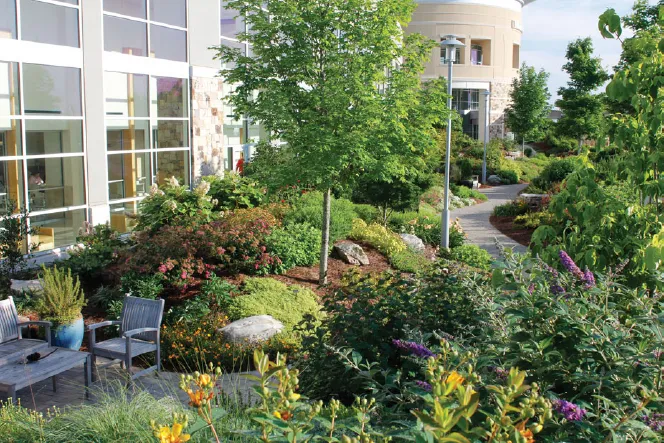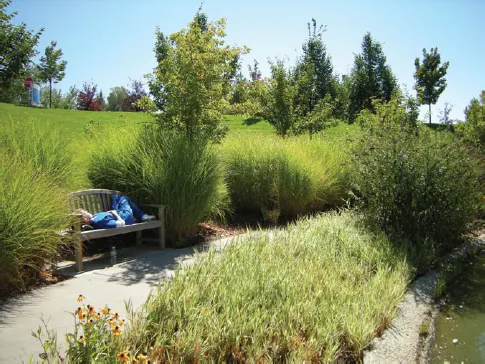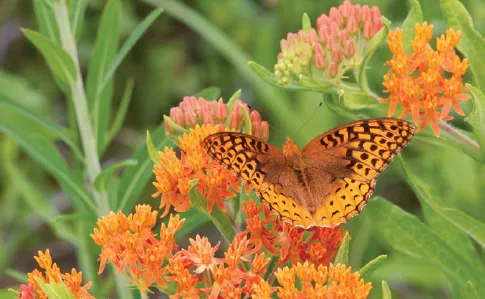
eBook - ePub
Therapeutic Landscapes
An Evidence-Based Approach to Designing Healing Gardens and Restorative Outdoor Spaces
Clare Cooper Marcus, Naomi A Sachs
This is a test
Buch teilen
- English
- ePUB (handyfreundlich)
- Über iOS und Android verfügbar
eBook - ePub
Therapeutic Landscapes
An Evidence-Based Approach to Designing Healing Gardens and Restorative Outdoor Spaces
Clare Cooper Marcus, Naomi A Sachs
Angaben zum Buch
Buchvorschau
Inhaltsverzeichnis
Quellenangaben
Über dieses Buch
This comprehensive and authoritative guide offers an evidence-based overview of healing gardens and therapeutic landscapes from planning to post-occupancy evaluation. It provides general guidelines for designers and other stakeholders in a variety of projects, as well as patient-specific guidelines covering twelve categories ranging from burn patients, psychiatric patients, to hospice and Alzheimer's patients, among others. Sections on participatory design and funding offer valuable guidance to the entire team, not just designers, while a planting and maintenance chapter gives critical information to ensure that safety, longevity, and budgetary concerns are addressed.
Häufig gestellte Fragen
Wie kann ich mein Abo kündigen?
Gehe einfach zum Kontobereich in den Einstellungen und klicke auf „Abo kündigen“ – ganz einfach. Nachdem du gekündigt hast, bleibt deine Mitgliedschaft für den verbleibenden Abozeitraum, den du bereits bezahlt hast, aktiv. Mehr Informationen hier.
(Wie) Kann ich Bücher herunterladen?
Derzeit stehen all unsere auf Mobilgeräte reagierenden ePub-Bücher zum Download über die App zur Verfügung. Die meisten unserer PDFs stehen ebenfalls zum Download bereit; wir arbeiten daran, auch die übrigen PDFs zum Download anzubieten, bei denen dies aktuell noch nicht möglich ist. Weitere Informationen hier.
Welcher Unterschied besteht bei den Preisen zwischen den Aboplänen?
Mit beiden Aboplänen erhältst du vollen Zugang zur Bibliothek und allen Funktionen von Perlego. Die einzigen Unterschiede bestehen im Preis und dem Abozeitraum: Mit dem Jahresabo sparst du auf 12 Monate gerechnet im Vergleich zum Monatsabo rund 30 %.
Was ist Perlego?
Wir sind ein Online-Abodienst für Lehrbücher, bei dem du für weniger als den Preis eines einzelnen Buches pro Monat Zugang zu einer ganzen Online-Bibliothek erhältst. Mit über 1 Million Büchern zu über 1.000 verschiedenen Themen haben wir bestimmt alles, was du brauchst! Weitere Informationen hier.
Unterstützt Perlego Text-zu-Sprache?
Achte auf das Symbol zum Vorlesen in deinem nächsten Buch, um zu sehen, ob du es dir auch anhören kannst. Bei diesem Tool wird dir Text laut vorgelesen, wobei der Text beim Vorlesen auch grafisch hervorgehoben wird. Du kannst das Vorlesen jederzeit anhalten, beschleunigen und verlangsamen. Weitere Informationen hier.
Ist Therapeutic Landscapes als Online-PDF/ePub verfügbar?
Ja, du hast Zugang zu Therapeutic Landscapes von Clare Cooper Marcus, Naomi A Sachs im PDF- und/oder ePub-Format sowie zu anderen beliebten Büchern aus Architecture & Urban Planning & Landscaping. Aus unserem Katalog stehen dir über 1 Million Bücher zur Verfügung.
Information
Chapter 1
Introduction
Having spent many weeks in the hospital left an indelible imprint on the way I experience pain, suffering, and loss within the recognized healthcare environment. Surely this fear and anxiety that one feels in this controlled and somewhat clinical building can leave one feeling more vulnerable, fragile, and scared. Just by being outside and with nature, to smell and touch the plants, reduced the depression and dread. I think more positive thoughts, am hopeful, and if I cry I feel the plants understand and do not judge or cringe.
Mariane Wheatley-Miller, personal communication, 2013
HOSPITALS AND OTHER HEALTHCARE FACILITIES are some of the most difficult places for people to be. Regardless of the physical setting, they are almost invariably environments where people face a high degree of stress. Patients may be experiencing physical or emotional pain; visitors, in an alien and, for many, a threatening environment, are worried about a loved one or close friend. Healthcare providers, in many cases dealing with life and death on a daily basis, are under an enormous amount of pressure. Their hours are long and their workload is taxing.
Since the mid-1990s there has been an increasing emphasis on a patient-centered approach in healthcare and a growing understanding of the importance of evidence-based design (Cama 2009; Frampton, Gilpin, and Charmel 2003). Hospital interiors have largely changed from the white, clinical settings of decades ago to more colorful—sometimes even hotel-like—environments. Nursing homes, renamed assisted-living facilities, have largely left behind their depressing reputation and are being reborn as warm, homelike settings. The environmental needs of specific patients, such as those with Alzheimer’s disease, are increasingly understood. In short, there has been a revolution in the provision of healthcare and the recognition that the physical environment matters to people’s health and well-being and that the health and well-being of the whole person needs to be addressed rather than just the disease.
Along with these beneficial changes to healthcare buildings, there has been a growing recognition that the whole environment—including outdoor space—matters (fig. 1.1). A significant body of research confirms and sheds new light on what many people have known intuitively: that connection with nature is beneficial—even vital—for health. Walking in the woods, sitting on a park bench, tending the soil in one’s garden, and even watching the colors and movements of nature from indoors are all passive and active ways to connect with the natural world. They awaken our senses, encourage physical movement and exercise, facilitate social connection, reduce stress and depression, and elicit positive physiological and psychological response. Healthcare facilities—from hospitals to specialized medical settings to assisted-living and retirement communities—are striving to incorporate specially designed outdoor spaces that can support the health and well-being of patients, residents, visitors, and staff (fig. 1.2).
1.1 The trend toward patient-centered care continues to grow. Healthcare facilities such as the Northeast Georgia Medical Center, in Gainesville, incorporate restorative gardens into the master plans from the beginning of the design process. The Wilheit-Keys Peace Garden offers physical access to nature outside of the building and visual access from inside. Designer: The Fockele Garden Company.
Copyright, The Fockele Garden Company

1.2 Walking paths and benches for rest—even for stretching out to take a nap—provide a restorative environment for patients, visitors, and staff. The gardens of McKay Dee Hospital, in Ogden, Utah, are also open to the public and are thus an example of “preventive care” through community-centered design.
Photo by Chris Garcia

Professional magazines are increasingly mentioning praiseworthy hospitals with healing gardens or views to nature. Excellent books have been published recently that focus specifically on healthcare outdoor space (Rodiek and Schwarz 2006, 2007; Pollock and Marshall 2012). However, it is rare that journals and magazines read by designers review such books or feature articles on healthcare outdoor space. Sadly, excellent books and monographs on healthcare building design often pay scant attention to outdoor spaces. Building plans are depicted with white expanses around them as if they are floating in space.
While the evidence for the importance of access to nature is there—and growing—the actual provision of appropriate outdoor space in healthcare facilities is often less than adequate, with limited “green nature,” unmet needs for privacy and “getting away,” even poor provision of the most basic needs, such as ease of access, comfortable seating, safe walking surfaces, protection from the sun, and so on.
The goal of this book is to focus critical attention on healthcare outdoor space, to emphasize the importance of evidence-based design, to highlight exemplary case studies, and to present research-based guidelines to inform clients and designers of restorative outdoor spaces. The aim is to address two key groups of readers: the clients and funders of healing spaces and the designers (principally landscape architects) who will translate client needs into an actual environment. If clients and funders understand more about the requirements and goals of a healing garden, they can more easily communicate with the designer. If designers understand more about the research on which to base their decisions, they are more likely to meet the goals of their clients—those who provide the funding and the users who will eventually benefit from the garden (fig. 1.3).
1.3 Native plantings at Kent Hospital in Warwick, Rhode Island, create a beautiful entrance. Designer: Wellnesscapes.
Photo courtesy of Thomas Benjamin, Wellnesscapes.com, on behalf of Kent Hospital

With an audience of two quite different sets of “actors,” it is inevitable that some parts of this book will speak more to one than the other. For example, some sections of the chapter on planting and maintenance may be basic knowledge for an experienced landscape architect but new and useful information for a client. The detailed design guidelines are principally aimed at the practicing designer and may be of less importance to the client or philanthropic donor. Chapters on horticultural therapy and participatory design may provide new information for many readers. The case studies of exemplary gardens throughout document existing best practices and will, the authors hope, inspire anyone using this book.
The core of the book consists of the general design guidelines presented in chapter 6. These are research-informed recommendations that need to be followed in any kind of healthcare outdoor space, whether it is a courtyard or a roof garden, whether it is at an acute-care hospital or a residential facility for the frail elderly. Beyond these basic guidelines, specific guidelines must also be followed for certain patient groups. These are explained in chapters 7 through 14—gardens for ill children, those with cancer, the mentally ill, Alzheimer’s patients, the frail elderly, returning veterans, rehabilitation patients, and those in hospice.
Different terms have emerged to refer to outdoor spaces in healthcare, and two different types can be recognized. A healing, therapeutic, or restorative garden (these terms are used interchangeably in this book) is one that users, whether residents or visitors, experience any way they want: to sit, walk, look, listen, talk, meditate, take a nap, explore. Therapeutic benefits are derived from just being in the garden. No staff is necessary, except for maintenance. Such a garden might be found at an inpatient acute-care hospital, a residential facility for the frail elderly, a hospice, or an outpatient clinic.
In an enabling garden, by contrast, activities are led by a professional horticultural therapist (HT), occupational therapist (OT), physical therapist (PT), and other allied professionals in collaboration with other clinical staff. The HT might engage recovering stroke victims in weeding, watering, and repotting plants; the PT or OT might help someone with a broken limb by encouraging reaching, grasping, and exercising. Therapeutic benefits are derived from hands-on activities and exercise in the garden (fig. 1.4). Such a garden is likely to be found at a rehabilitation hospital, some mental and behavioral health facilities, and some children’s hospitals.
1.4 A veteran transplants seedlings into a larger pot at Gardening Leave in Auchincruive, Scotland.
Courtesy of Gardening Leave Limited

For the purposes of this book, “nature” is defined quite broadly, and while largely referring to vegetation, it also refers to wildlife, water, stone, the weather, sky, clouds, wind, and sun. “Access to nature” includes actual passive and active, indoor and outdoor engagement with nature through any or all of the senses (fig. 1.5).
1.5 Great spangled fritillary on butterfly weed.
Photo from www.henrydomke.com.

Indoor contact with nature can include looking out at nature through a window; viewing nature imagery (still and moving pictures); seeing, touchin...